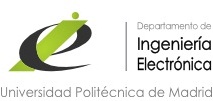Featured events
| Mon | Tue | Wed | Thu | Fri | Sat | Sun |
|---|---|---|---|---|---|---|
| 1 | 2 | 3 | 4 | 5 | 6 | 7 |
| 8 | 9 | 10 | 11 | 12 | 13 | 14 |
| 15 | 16 | 17 | 18 | 19 | 20 | 21 |
| 22 | 23 | 24 | 25 | 26 | 27 | 28 |
| 29 | 30 |
Microsystems and Nanoelectronics (MSIS+NANO 2)
Current electronic systems include, in increasing numbers, sensors, actuators and interfaces with the user which tend to be, in turn, real micro-and nanosystems (MS and NS). This is more relevant in portable systems where improved performance, the user interfaces and energy aspects are promoting the use of nanoelectronics technology even in the parts of uptake and storage of electrical energy. The smart phones are certainly a paradigm of such trends. Other examples of social relevance are occurring in the area of biomedicine. The commercial availability of so-called "lab-on-a-chip", true MS and NS that integrate aspects of nanosensors, MS and integrated intelligence and routinely used in hospitals analytical and sensory implant developments are promoting new advances in MS and NS.
From a content perspective, the educational objectives can be grouped into three main blocks:
- Understand and review an overview of micro and nanoelectronics (NE), from the point of view of current applications, this market, and the ongoing potential applications, with special emphasis on electronic systems.
- Study the principles of operation and manufacturing of Microsystems and Nanoelectronics in the areas listed above. In this context we introduce the basic principles of nanotechnology that are required.
- Study of the presence of MS, NS and NE in current electronic systems in four initial areas, smart mobile phone, communications, high-speed internet, biomedicine, and generation / energy storage. This will allow comparative knowledge of different types of micro-electro-mechanical, acoustic, optical, electro-optical and (bio) chemical, and submit the presence of NE in the processing circuitry and storage.
From the standpoint of aptitude, the objectives of this course are to develop the ability to reflect and relate contents, the search, preparation and presentation of information, and the integration of knowledge work.
This course consists of two interrelated parts. The first part is devoted to the study of the fundamentals nanoelectronic and functionality of the various types of micro / nano-electronic current. The second part deals with the identification and comparative analysis of micro / nano-and nanoelectronic elements currently on loa advanced electronic systems. The initial systems for the study refer to portable terminals, high-speed communications, energy capture and storage and biomedicine. In connection with this second part of the course, each student must make a personal studio and oral and written presentation on MS, NS and Now or NE, after the preofesor Guided definition in any of the current SE scopes have ineteres for the student ..
PART 1
1. Introduction to microsystems and background
2. Materials and manufacturing for microsystems
3. Physical microsystems: temperature, pressure, acoustic, inertial
4. Optical Microsystems: photodetectors and displays
5. Chemical and Biological Microsystems
6. Microsystems Market
7. Introduction to nanotechnology and nanoelectronics. Evolution and advanced devices in the ICT area.
8. Materials and structures for nanoelectronics and their properties in that scale.
9. Nanoelectronic devices and nanooptoelectrónicos
10. Other nanostructures for ICT and energy.
PART 2
Functional study and comparative analysis of the presence of MS, NS and NE in
• Smart Phones
• High-speed communications
• Biomedicine
• Collection and storage of energy
Teaching methodology
This subject will be taught through classes and activities outside of class (study and work and team). Students complete their training with a single character work to be presented to their peers as part of the course evaluable. In addition, some invited lectures will be taught by professors and researchers from other centers on relevant topics related to the subject. Also, students will be offered optional visits to other research centers.
Evaluation description, displaying the weight of each test.
The evaluation will consist of testing (50% of score), along with exposure of individual work by students, on a topic agreed in advance with the teachers, or other homework (40%). They also account for students' active participation in the sessions and discussion forums (10%).

